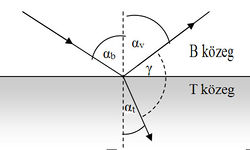„Experiments with microwaves” változatai közötti eltérés
A Fizipedia wikiből
| 10. sor: | 10. sor: | ||
__TOC__ | __TOC__ | ||
| − | + | <wlatex> | |
==Theoretical summary== | ==Theoretical summary== | ||
<wlatex> | <wlatex> | ||
In the experiment we use microwaves to study wave phenomena. Microwaves - as well as light - are electromagnetic waves of wavelength about 1 mm - 30 cm (correspondingly, the frequency of microwaves is $ 10^{9} - 3 \cdot 10^{11}\ \text{Hz} $). | In the experiment we use microwaves to study wave phenomena. Microwaves - as well as light - are electromagnetic waves of wavelength about 1 mm - 30 cm (correspondingly, the frequency of microwaves is $ 10^{9} - 3 \cdot 10^{11}\ \text{Hz} $). | ||
| − | + | ||
===Polarization of waves=== | ===Polarization of waves=== | ||
| − | + | ||
<span id="fig:1">[[Fájl:Mikrohulla tores.jpg|bélyegkép|250px|jobb|Fig. 1: Reflection and refraction of waves]]</span> | <span id="fig:1">[[Fájl:Mikrohulla tores.jpg|bélyegkép|250px|jobb|Fig. 1: Reflection and refraction of waves]]</span> | ||
A lap 2018. július 3., 11:26-kori változata
Aim of the experiment
- To deepen the knowledge related to wave phenomena,
- To verify the relationships in wave physics experimentally,
- To model phenomena and devices in wave optics.
For the purpose:
- We summarize the basic knowledge on wave phenomena,
- We examine reflection, refraction, interference and diffraction of microwaves,
- We assemble some experimental setups (which are also useful in optics) based on interference of waves, and measure the wavelength of the used microwave.
Theoretical summary
\setbox0\hbox{\setbox0\hbox{$ 10^{9} - 3 \cdot 10^{11}\ \text{Hz} $}%
\message{//depth:\the\dp0//}%
\box0%
}%
\message{//depth:\the\dp0//}% \box0% </latex>).
Polarization of waves
In a transversal wave the vector related to the changing quantity is in the plane perpendicular to the direction of propagation but within this plane its direction is arbitrary.
